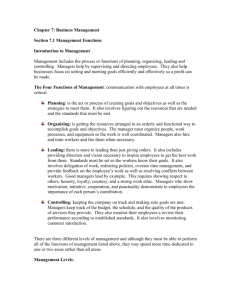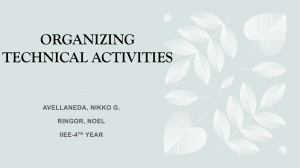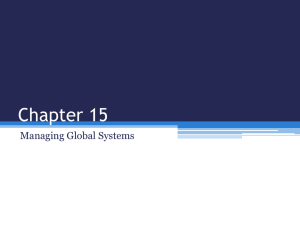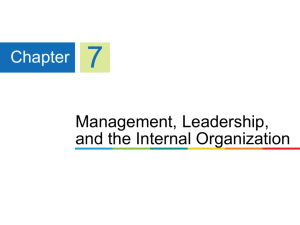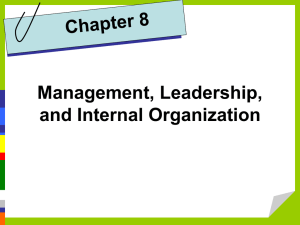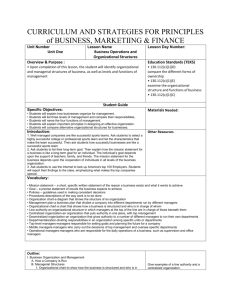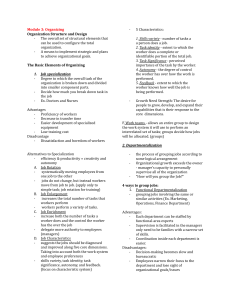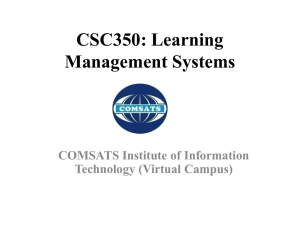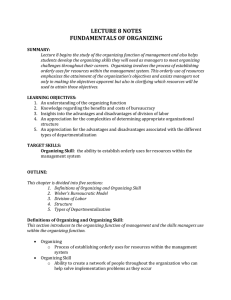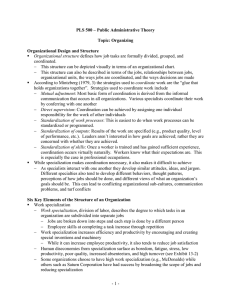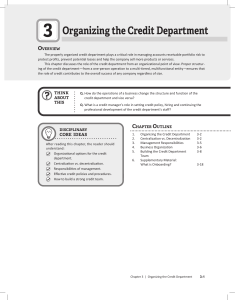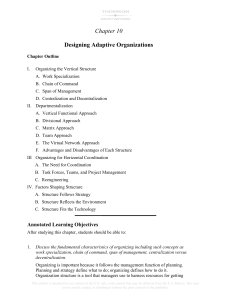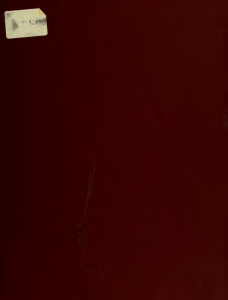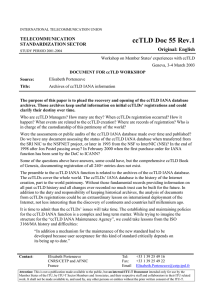Ch 7 PPT 2013
advertisement
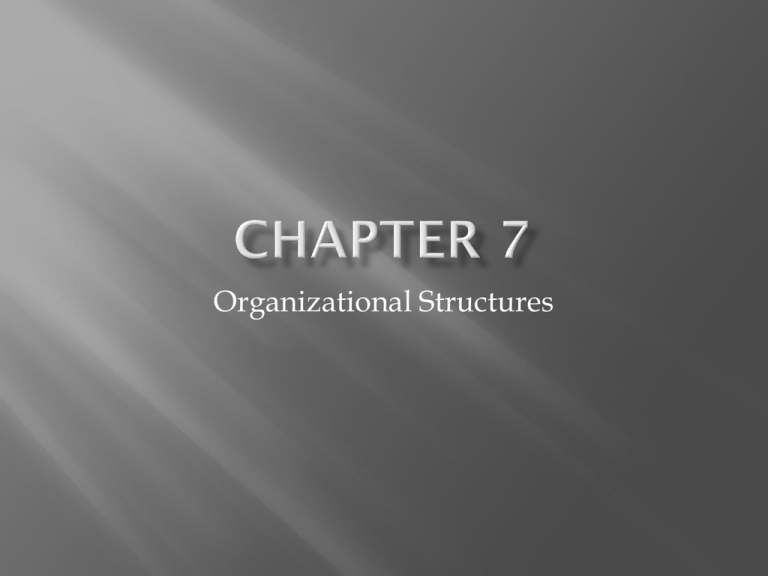
Organizational Structures Any business that employs more than one person needs a management plan. Management plan = divides a company into different departments run by different managers. Managers: Direct workers Coordinate activities Solve provlems 1. 2. Organizational chart = shows how a business is structured and who is in charge of whom. Different ways to organize management: Line authority = managers at the top of the line are in charge of those beneath them, and so on. This is centralized organization = puts authority in one place, with top management. Decentralized organization = gives authority to a number of different managers to run their own departments. Example: you might have one person run the production department and another person in charge of marketing. Formal Structure Departmentalized Departmentalization = divides responsibility among specific units, or departments. Departments can be organized by what they do, what they make, or by region. Informal Structure A lot of small businesses Don’t need a lot of managers 1. Explain the organizational structures of business. Businesses can be structured formally or informally. A formal structure is usually departmentalized. An organization can also be centralized, with authority placed at the top, or decentralized, with authority given to a number of different managers. 2. Give an example of departmentalization. Sales, marketing, inventory, production, etc. Every aspect of business has to be managed from setting goals to meeting them. Most businesses have three levels of managers: Top-level managers Middle managers Responsible for setting goals and planning for the future. Titles like president, vice president, and chief executive officer (CEO). Carry out decisions of top management. Titles like plant manager, regional manager, and department head. Operational managers Responsible for daily operations of the business. Duties include overseeing workers and meeting deadlines. Titles like supervisor, office manager, and crew leader. 1. What are the three levels of management? Top-level, middle-level, and operational. 2. Which of the three levels is most involved in the day-to-day supervision of employees? Operational managers A good manager carries out the four different functions of business: 1. 2. Planning and Staffing: setting realistic goals, deciding how the company should perform, and asking key questions Organizing: assigning managers different tasks and coordinating their tasks, checking budgets, and determining who makes decisions and who answers to whom. 3. Leading: creating a vision of the company to inspire employees, setting standards, communicating with employees to provide guidance and resolution of conflicts, training, encouraging and motivating employees, and offering incentives. 4. Controlling: keeping the company on track and making sure all goals are met, monitoring the budget, the schedule, and the quality of the product, monitoring employees and reviewing their performance, and monitoring customer satisfaction. 1. What are the four functions of management? planning, organizing, leading, and controlling 2. What is a manger’s objective in leading? maximize potential Most managers begin their career as a company employee and are promoted after they have gained experience and have shown certain qualities. Ability to perform varied activities Ability to work under pressure Effective communication Interpersonal skills Ability to gather and use information (managers must be aware of the events and forces in the global market that affect their business.) Advantages Higher pay Prestige More influence on how the company is run Greater control over their time & how they spend it Disadvantages Blamed when things go wrong Mistakes are more costly because their decisions affect many workers Pressure to do things right the first time Relationships with employees is different than with fellow managers
